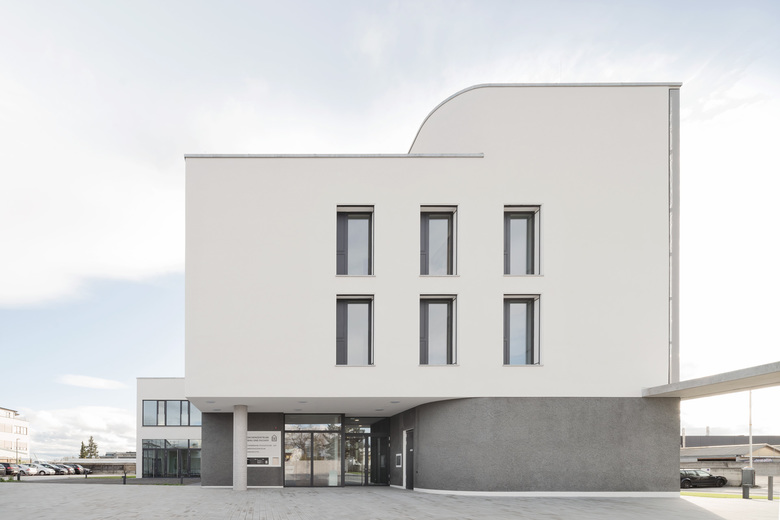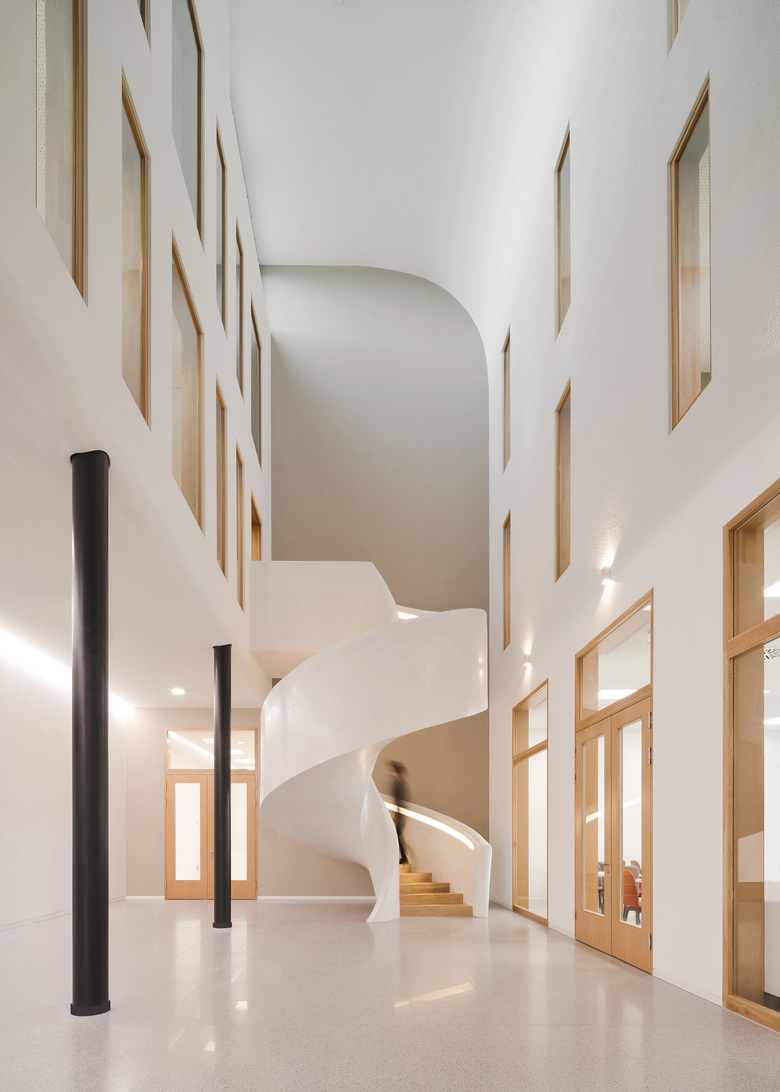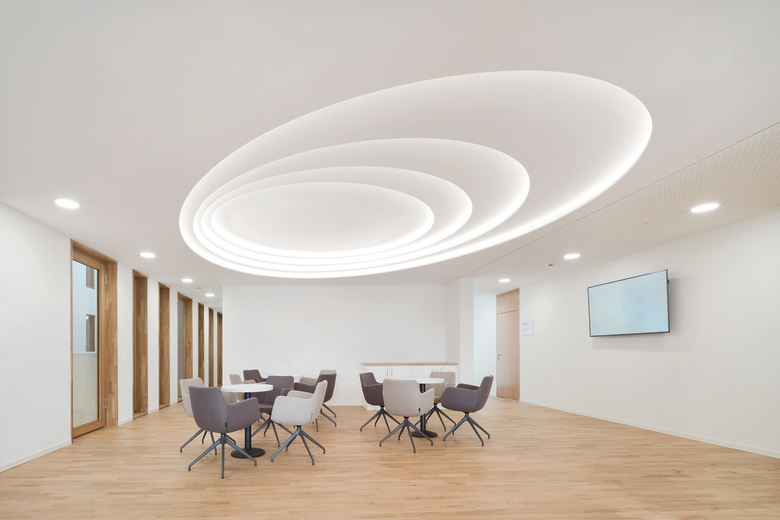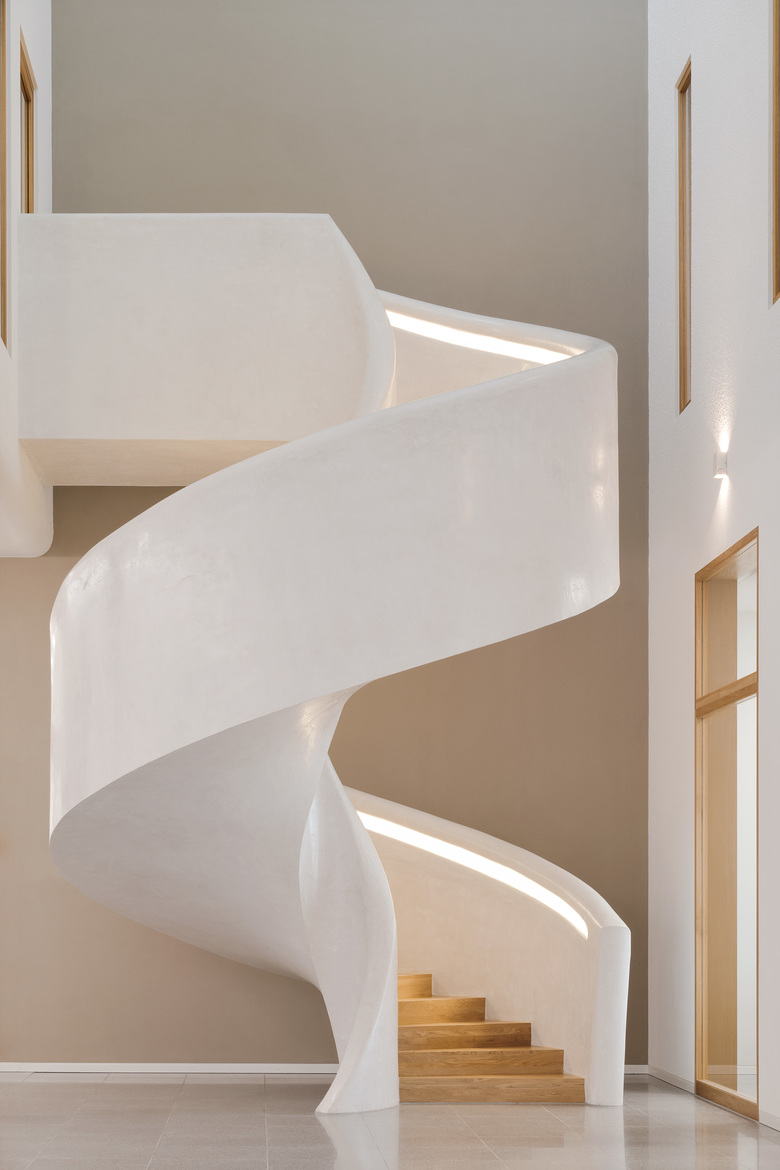Industry Centre for Interior Finish and Façade
Rutesheim, Germany
The new Industry Centre for Interior Finish and Façade is home to the branch office of the Fachverband der Stuckateure für Ausbau und Fassade Baden-Württemberg (Baden-Württemberg Association of Plasterers for Interior Finish and Façade) and the Competence Centre for Interior Finish and Façade. The varied room programme includes offices, training and event rooms, overnight accommodation, a dining room and a caretaker’s flat. The eye-catcher in the atrium of the new building is the sculptural spiral staircase with its high-quality stucco surface. For every visitor, it exemplifies the excellent craftsmanship of plasterers in a tangible way.
Within the network of competence centres throughout Germany, the new industry centre is responsible for the fields of plastering, façades, thermal insulation and dry construction. The new building is located in a highly diverse industrial estate in the west of Rutesheim, a small town between Stuttgart and Pforzheim. In the urban interplay with the existing buildings on the site, the industry centre represents a prestigious unit along the street. Adjacent to the entrance area, there is a space called the Market Square, extending towards the north. This outdoor area serves both for events and for showcasing exhibits that demonstrate the diversity of exterior plaster and other materials used in façade design.
The compact structure accommodates a wide variety of uses. All units are grouped around the central atrium and can be accessed separately via two staircases. The large, two-storey conference room opens onto the quiet garden area. The scaled window openings to the north, which provide the conference hall with even and glare-free daylight, are a prominent façade feature.
The industry centre was constructed with load-bearing exterior wall panels and a skeleton structure made of reinforced concrete. Two stair cores with an elevator shaft provide structural stability to the building, which is located in seismic zone 1. Great attention was paid to the energy concept of the new building. As a result, the house has a very low heating demand at passive house level, an energy-saving electricity concept and compensates for its electricity consumption through the use of a photovoltaic system on the flat roof. The low heating demand is covered by a brine heat pump with geothermal probes and thermal solar collectors.
Classical modernist buildings often used plaster in a way that suited the material. This approach was adopted for the industry centre, simultaneously highlighting the range of services provided by plasterers. The cubic building was covered with a uniform rough-cast plaster façade. The base area is accentuated with a dark anthracite-coloured nine-millimetre thick plaster finish.
In the atrium, a sculptural spiral staircase stands out brightly against a dark wall. The cantilevered steel-string staircase with its very high-quality stucco surface directly links the uses on the ground and first floors. An LED light strip embedded in the handrail additionally stages the staircase.
- Architects
- a+r Architekten
- Year
- 2018
- Client
- Berufförderungsgesellschaft des Stuckateurhandwerks GmbH














